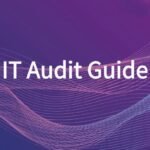An IT Audit (Information Technology Audit) is a structured, independent evaluation of an organization’s technology infrastructure, applications, systems, operations, and related processes. The purpose of an IT audit is to determine whether IT controls are adequately designed and operating effectively to support the organization’s objectives, safeguard information assets, ensure data integrity, and comply with relevant regulations and internal policies.
🔍 Core Definition
IT audit is a subset of the broader internal or external audit function, specifically focused on evaluating the risks, controls, and governance of information technology. It assesses how well an organization’s IT environment:
- Protects assets (data, systems, intellectual property)
- Maintains data accuracy and reliability
- Promotes efficiency of IT operations
- Supports strategic business goals
- Ensures compliance with regulatory and security requirements
🧩 Types of IT Audits
| Type | Description |
|---|---|
| General Controls Audit | Reviews IT governance, policies, infrastructure, and overarching controls applicable to all systems |
| Application Controls Audit | Assesses input, processing, and output controls within specific business applications |
| Cybersecurity Audit | Focuses on network, endpoint, and data protection controls against cyber threats |
| Compliance Audit | Ensures conformity with legal and regulatory requirements (e.g., SOX, ISO 27001) |
| Operational | Evaluates the efficiency and effectiveness of IT processes and service delivery |
| Third-Party/Vendor Audit | Reviews IT risks associated with outsourcing, cloud providers, or external partners |
📌 Key Focus Areas
- IT Governance and Strategy
- Does the organization have a clear IT governance structure aligned with business objectives?
- Are there policies, standards, and oversight mechanisms in place?
- Information Security and Cybersecurity
- Are data confidentiality, integrity, and availability (CIA) principles adequately protected?
- Are there technical and procedural controls to prevent unauthorized access or data breaches?
- IT Operations and Infrastructure
- Are IT services and infrastructure reliable, scalable, and effectively monitored?
- Is there a formalized incident, problem, and service management process?
- Change and Configuration Management
- Are system changes tracked, authorized, tested, and documented?
- Are system configurations reviewed and standardized?
- System Development and Acquisition
- Are systems developed or procured with security and control considerations?
- Are development lifecycles documented and controlled?
- Data Integrity and Access Control
- Are mechanisms in place to ensure data is accurate, complete, and timely?
- Is access to sensitive data restricted and reviewed periodically?
- Business Continuity and Disaster Recovery
- Does the organization have recovery plans for critical systems?
- Are continuity and recovery procedures regularly tested?
- Compliance and Risk Management
- Are IT-related regulatory requirements (e.g., SOX, GDPR, HIPAA, PCI-DSS) met?
- Is there an enterprise IT risk management framework in use?
⚙️ Who Performs IT Audits?
IT audits are typically conducted by:
- Internal auditors (in-house audit or risk teams)
- External auditors (e.g., financial audit firms or specialist consultants)
- Regulatory bodies (for compliance verification)
- Third-party security assessors (e.g., for ISO 27001, SOC 2, or PCI-DSS certification)
Auditors may hold certifications such as:
- CISA (Certified Information Systems Auditor)
- CISSP (Certified Information Systems Security Professional)
- CRISC (Certified in Risk and Information Systems Control)
- ISO 27001 Lead Auditor
🎯 Purpose of an IT Audit
| Objective | Description |
|---|---|
| Assurance | Provides stakeholders with assurance that IT systems support business and security objectives |
| Accountability | Ensures that IT teams follow defined policies, standards, and responsibilities |
| Improvement | Identifies gaps and inefficiencies to drive operational and security enhancements |
| Compliance | Verifies adherence to internal, legal, and industry-specific regulatory frameworks |
🔒 Why IT Audit Matters in the Digital Age
In today’s increasingly digital business environment, organizations depend heavily on technology for core operations, customer engagement, and innovation. This dependency introduces significant risks related to:
- Cybersecurity attacks and data breaches
- System outages and downtime
- Non-compliance with complex regulations
- Misaligned or inefficient technology investments
IT audit helps proactively identify and address these risks, ensuring technology supports rather than undermines the organization’s performance and reputation.

- A Comprehensive Guide to IT Audit: Purpose, Frameworks, Processes, and Best Practices
- IT Audit Guide 01: What Is IT Audit? Why IT Audit Matters?
- IT Audit Guide 02: Why and When to Conduct IT Audit?
- IT Audit Guide 03: Common IT Audit Frameworks
- IT Audit Guide 04: Scope and Content of IT Audit Work
- IT Audit Guide 05: IT Audit Process (Step-by-Step Guide)
- IT Audit Guide 06: IT Audit Templates and Checklists
- IT Audit Guide 07: IT Audit Deliverables
- IT Audit Guide 08: IT Audit Best Practices

